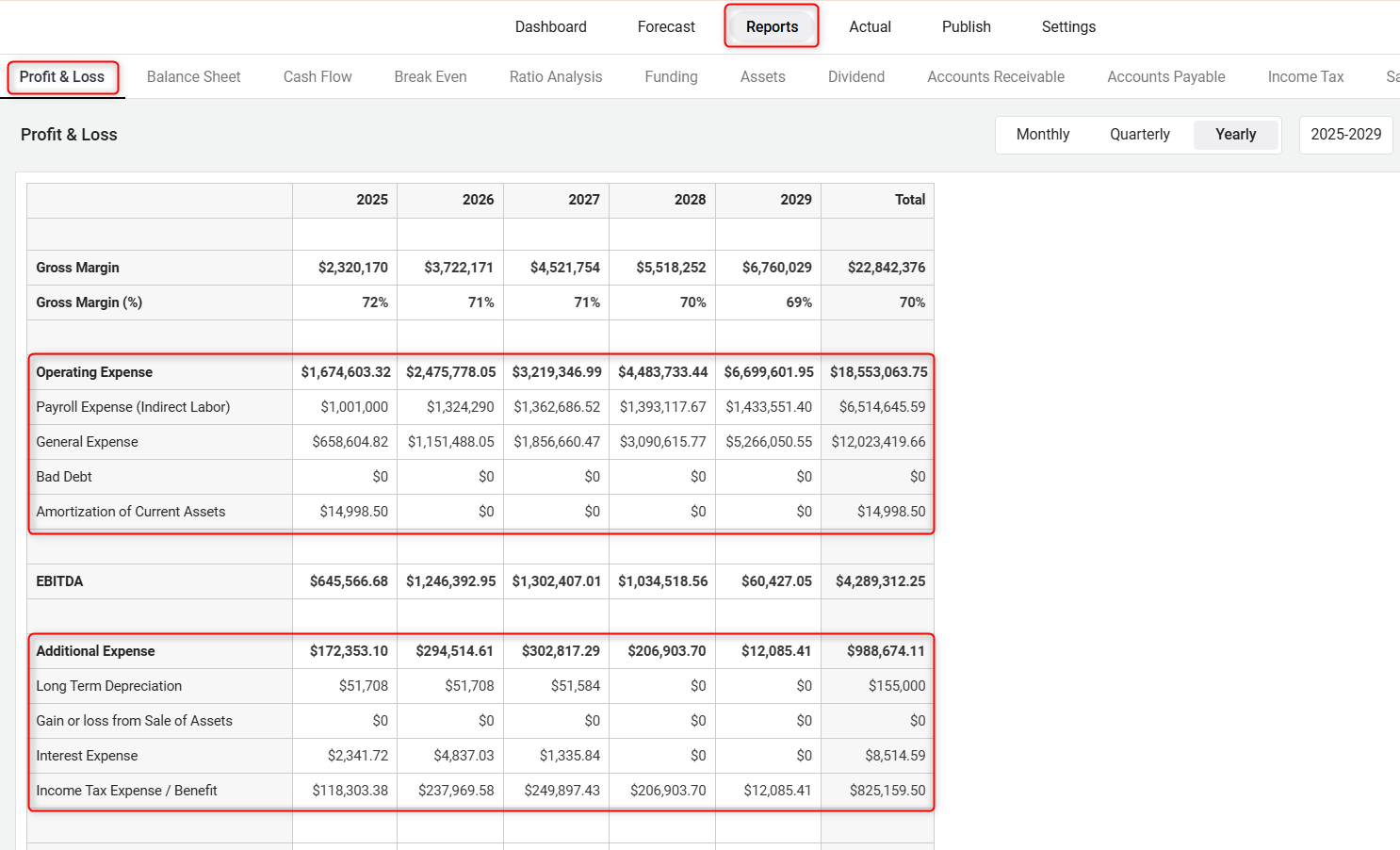What is the difference between cost of sales and expenses?
As part of financial forecasting activities, there are crucial aspects you should understand the difference between the cost of sales(Direct costs) and expenses (Operating expenses or indirect costs) to put your financials on the path to success. They are used for different purposes and calculated into your financials differently. This article will help you decide when to use each one in your forecast.
Understanding the Cost Of Sales
The Cost of Goods Sold (COGS) refers to the direct costs of producing the goods sold by a company. This amount includes the cost of the materials and labor directly used to create the goods. It excludes indirect expenses, such as distribution costs and sales force costs. To deliver your product or service to your customers, you'll incur some necessary costs. If you manufacture your product, for example, you'll have to spend money on raw materials and labor. If you're a retailer, you'll likely have to spend money buying products wholesale. If you're a restaurant, you'll have to spend money on raw ingredients and servers.
Service-based businesses often have a smaller number of direct costs than product-based businesses, but they still have direct costs in most cases. If you sell hair salon services, for example, you might need to spend money on hair products such as shampoo, conditioner, and hair dyes.
Here's where the subject of personnel cost of sales comes into play as well; this is also called direct labor. For example, if an employee is hired to work on a project, either exclusively or for an assigned number of hours, their labor on that project is a personnel cost of sales.
If you're not sure whether a cost is a Cost Of Sales, here's a good rule of thumb: if you want to know if an expense falls under COGS, ask: "Would this expense have been an expense even if no sales were generated?" Meaning, if you sold no product at all this month, would you still have this cost to pay? If the answer to that question is no, then the cost is most likely a cost of sales.
TIP: Moving finance items from one group to another is hassle-free. Check out our help guide here.
TIP: Switch finance items between COS and Expenses effortlessly. Click here for more.
The COGS is an important metric on the financial statements as it is subtracted from a company’s revenues to determine its gross profit. The gross profit is a profitability measure that evaluates how efficiently a company is managing its labor and supplies in the production process.
Cost of sales is also referred to as costs of goods sold, or just COGS, or Direct costs.
Understanding Operating Expenses
Operating expenses refer to expenditures that are not directly tied to the production of goods or services.
Operating Expenses are also referred to as overhead expenses or expenses. This includes things like rent, utilities, marketing, office supplies, and so on. Basically, an expense is the money you spend in day-to-day business activities that aren't the cost of sales.
NOTE: The Money you'll spend on loan payments is entered as Funding in your finances. The money you'll spend on inventory is entered as Inventory.
How Cost Of Sales and Operating Expenses Calculate into your Financials?
The reason we separate direct costs from expenses in your forecast is simple:
Cost of sales affects the profit margin of your product or service (Revenue stream). It will reduce your revenue to calculating Gross Profit.
- Operating Expenses affect the profit margin of your company as a whole. It will reduce Gross Profit to calculate your Net Income.
Net Profit Calculation = Gross Profit – Operating Expenses
Gross Profit Calculation = Revenue – Cost of Sales
You can see the Cost of Sales in the sample Profit and Loss statement below. They are calculating against the Revenues to arrive at the Gross Margin, which is the overall profit margin of the product or service:

In the same Profit and Loss statement, you can see the expenses calculated in the Operating Expenses section:

Your expense entries are applied to the Gross Margin to create a picture of the overall profitability of your business, also known as Net Income(Net Profit). Notice that the gross margin is larger than the net income.
Generally speaking, you'll want to make sure that your product or service has a wide enough Gross Margin so that it can accommodate your operating expenses and still leave a Net Income.
